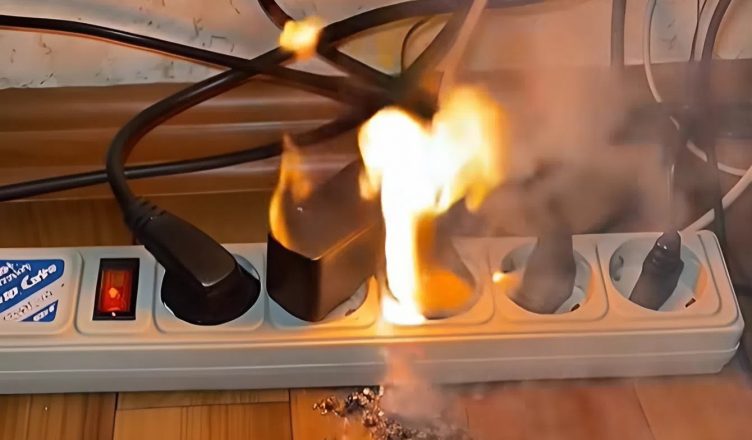Extension cords are everywhere. One outlet becomes five, and just like that — your TV, laptop, heater, and maybe even your washing machine are all running at once.
It’s convenient. It’s easy. And it might be incredibly dangerous.
Thousands of house fires start every year because of improper use of extension cords. Not because the cords were faulty — but because people plug in devices that should never be connected to them.
This isn’t about “recommendations.”
It’s about real, immediate risk. Below are the 5 devices you should absolutely never plug into an extension cord — not for a second, not “just this once,” not “I’ve done it for years with no problem.” That kind of thinking is how disasters begin.
- Space Heaters (Oil-filled, Convection, or Fan-based)
They’re small. They seem harmless. But space heaters are among the greediest energy consumers in your home. Most use 1,500 to 2,500 watts — pushing the limits of a standard power strip to the brink.
What can go wrong?
– Wire overheating.
– Melting insulation.
– Fire ignition.
– Best case? Your breaker trips. Worst case? Your house catches fire.
FACT: Over 70% of winter electrical fires are caused by space heaters plugged into extension cords.

- Washing Machines and Dishwashers
They’re big, powerful, and full of surprises. These machines use high-power motors, heating elements, and cycles that can spike current consumption suddenly and severely.
Why is that dangerous?
– Power surges during spin cycles.
– Overloading the strip.
– Silent internal overheating.
– Fire or permanent appliance damage.
Ask yourself: is that one extra socket really worth the price of a $600 appliance — or worse?
- Refrigerators and Freezers
They run 24/7, and they seem low-maintenance. But compressors use a massive surge of power every time they kick on — often 2–3x their normal draw.
The risk?
– Constant stress on extension cords.
– Burned contacts.
– Appliance malfunction.
– Short circuits if shared with other devices.
Many insurance companies refuse to cover fire damage if it involves a refrigerator plugged into an extension cord.
- Microwaves
They’re small, right? But inside is a transformer, heating elements, and intense electromagnetic activity. Most microwaves draw 1,000–1,200 watts, with short bursts that go far beyond that.
Why avoid plugging it in?
– Instant wire overheating.
– Electromagnetic interference.
– High fire risk, especially with low-quality cords.
Microwaves should always be plugged directly into the wall — no exceptions.
- Coffee Makers (Especially High-End or Commercial Models)
They look innocent — but inside? Boilers, pumps, and heating systems working overtime to deliver that espresso shot. Even basic models consume 1,000–1,500 watts, with sharp peaks.
What happens if you plug it into a strip?
– Cords heat up fast.
– Risk of melting or sparking.
– Fire before you even get to your first sip.
If your machine steams milk or has a built-in grinder, it needs its own dedicated wall outlet.
So What Should You Do?
Never plug high-wattage devices into extension cords.
Always check the power strip’s rating before use.
Use only heavy-duty cords with built-in surge protection.
Avoid cheap, flimsy power strips at all costs.
Still think it’s harmless?
Here’s what can happen:
Property damage
Complete appliance failure
Electrical fire at night
Smoke inhalation injuries
Loss of life
Saving a socket is never worth risking your home.
That one click of a plug could cost you everything.
FINAL WARNING:
An extension cord is not a miracle device. It has limits.
If you’re thinking:
«I’ve been doing this for years — nothing happened,»
then here’s the truth:
Nothing’s happened… YET.
A smart homeowner doesn’t wait for smoke to learn a lesson.
They prevent the fire before it starts.
So go check your power strip.
Right now.
Because it might already be too late.
